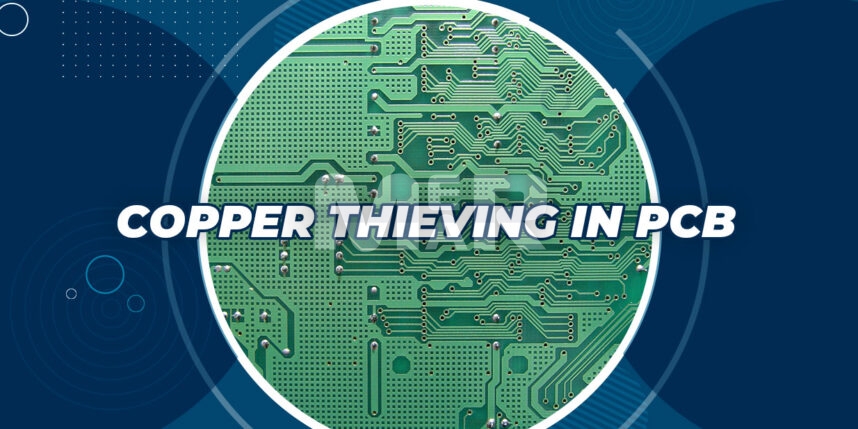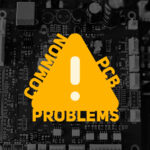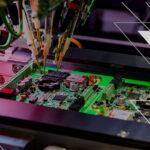What Is the Purpose of Copper Thieving in PCB Development?

Copper thieving in PCB refers to adding non-conductive patterns of copper to the printed circuit board. This is done to even out the electrical current used for plating the board. In the absence of this, there can be areas of the board that are isolated and where current can become more concentrated. This results in the often-seen “mushroom” profile caused on account of under-etching. In turn, in an impact both the electrical performance of the trace as well as its structural strength.
To avert these issues, adding copper thieving in the areas of the circuit board where the metal is sparse is effective. It ensures that the same amount of copper is distributed throughout the board so that the plating current is applied equally and the traces will all etch the same amount.
Thieving is seen by way of an array of dots or diamonds added to what would have otherwise been an open area on the board. It is important to remember that if there are any areas on which you specifically do not want any thieving to be added, the same needs to be mentioned on the fabrication drawings. Typically thieving is avoided in the following areas:
- Where it interferes with the controlled impedance elements on the board.
- Where you require a smooth area to pace a label.
- In case it violates creepage or clearance rules.
YOU MAY ALSO LIKE: OVERCOME PCB FABRICATION ERROR
Advantages of Copper Thieving in PCB
1. Etching and Plating Control
The big advantage of copper thieving is that it makes the copper distribution uniform which helps make etching & plating seamless and ensure that different copper densities do not plate and etch at different rates. In the absence of copper thieving copper features such as traces, pads, plated vias and more that are in a more sparsely populated area tend to over plate as opposed to those in more densely packed areas.
2. Consistency in Thickness
Thieving evens out the thickness of the finished board. If a design involves most of the copper layers being stacked on one side, there could be a noticeable change in thickness on one side as opposed to the other. Copper Thieving tends to bring about consistency in thickness in finished boards.
YOU MAY ALSO LIKE: STEP BY STEP PCB FABRICATION PROCESS
3. Minimize Bow and Twist
With uneven copper distribution, a big disadvantage is PCB warping and twisting. This is seen more so during high PCB assembly or when copper begins to heat and expand. Copper thieving goes a long way in minimizing warpage.
4. Control Dielectric Thickness Between Layers
Thieving is also an important way to control the dielectric thickness between copper layers. During the lamination cycle the layers are stacked together using pre-preg. Once it is heated the pre-preg liquefies and fills the gaps between the copper features. By doing this, it ensures no air is trapped inside the board. With uneven copper distribution, you will often be left with inconsistent dielectric thickness.
5. A Caveat About Thieving
While the advantages of Copper Thieving are many, it is important to keep in mind the fact that if there are traces on the layers just below where thieving has been added, it can impact the impedance of these traces. It is imperative therefore to add a note to your fabrication drawing to state that thieving should not be done in these areas.
To Sum Up
Thieving is an effective method to ensure that there is uniform plating of copper. To ensure this the plating current needs to be uniformly distributed over the PCB outer layer surfaces. It is imperative that you work closely with your PCB Contract manufacturer so that the copper thieving works for both plating and signal performance needs of the board. An experienced contract manufacturer will understand these requirements and can advise you on the creation of the thieving patterns. It is critical that any metal changes to the board are undertaken by the design engineers, who can look at the issue holistically, and can take all of the potential effects into account. It is important to remember that there is a lot to consider when adding copper thieving to a printed circuit board hence the experience and access to best practices of the contract manufacturer are priceless.
Mer-Mar Electronics is one of the leading PCB design and manufacturing companies, providing all in one PCB assembly and PCB fabrication solutions. Our consistent quality and quick turnaround endear itself to our customers, who look on us as a one-stop-shop for all their PCB manufacturing requirements. In case if you have any questions or require more information about our services, contact us via sales@mermarinc.com or call us on (760) 244-6149.








